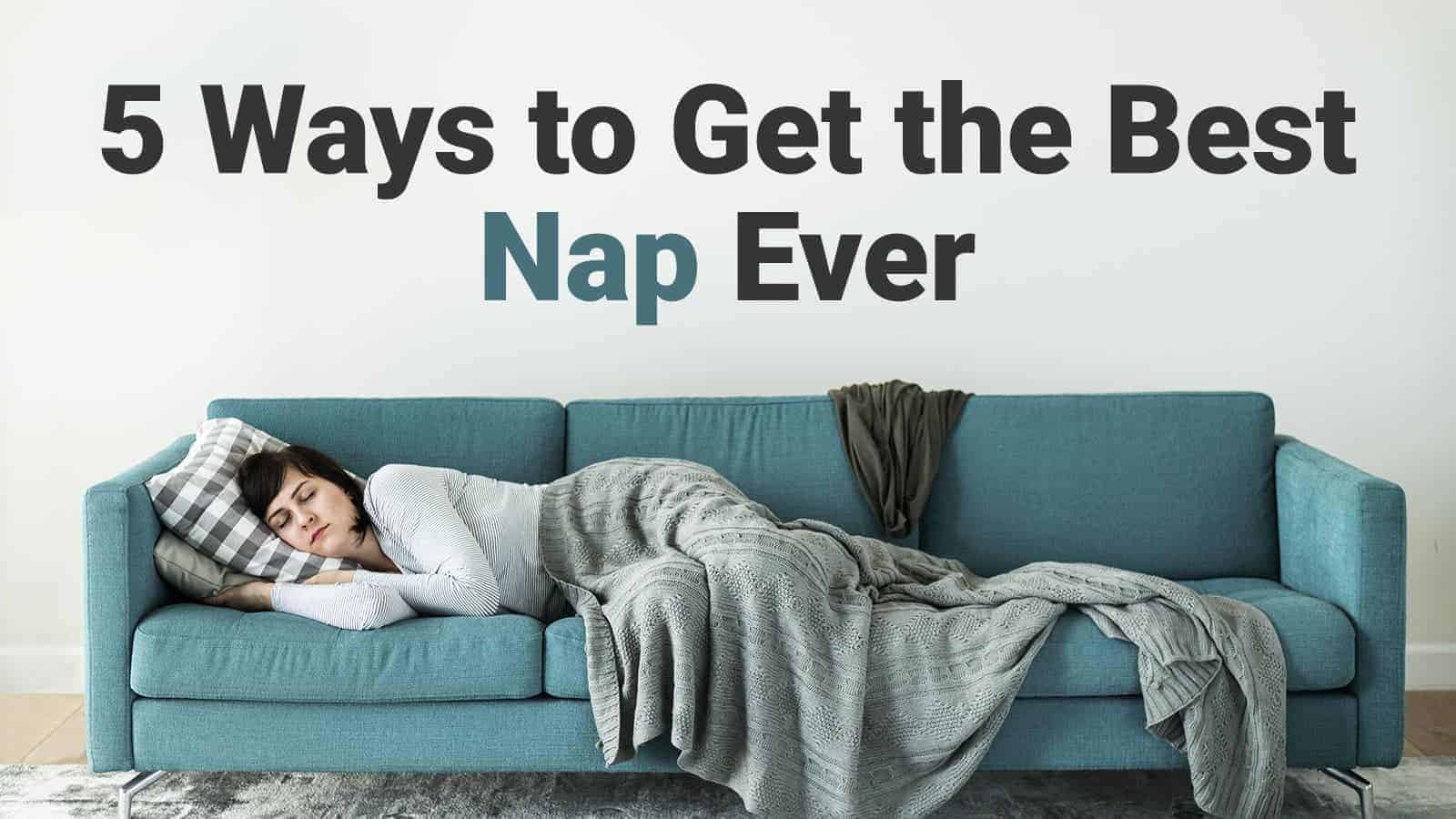You are doing yourself a big favor when you take naps during the day. A short sleep can energize your body and make the brain fog disappear. Naps also boost your immune system to allow your body to fend off colds and maintain a positive cardiovascular health. We hope to share with you some ways to get the best nap ever.
“Short naps are good. Given modern workplace demands, this is not possible for many people – but if you have the option, try napping for ten to twenty minutes in the afternoon, preferably lying down in a darkened room.” – Andrew Weil
Here Are 5 Ways to Get the Best Nap Ever
1. Keep nap times less than 90 minutes.
If you’re feeling sluggish in the afternoon, you need to nap to recharge your mind and body. According to Sleep.Org, a 20-minute power nap is best for alertness and productivity. However, if you have more time for a nap break, you should get a solid 90-minute sleep. Nap times that last between 30 to 60 minutes might make you feel more tired and groggy. It also zaps your creative juices.
If you feel like sleeping beyond 90 minutes, then it’s best to go home and get a full rest in your bedroom, as your body might be feeling something else apart from lack of sleep. Also, if you nap longer than 90 minutes, you’ll have a harder time catching your winks at night.
If it helps, set an alarm clock so that you can get the perfect 20-minute or 90-minute nap time. Ideally, you should start napping within two hours after you’ve had lunch because that’s when your blood sugar levels drop. Don’t start napping after 4 p.m.
Make your nap times consistent as well. As with regular bedtimes at night, you should stick to the same nap schedule every day to help your body fall asleep faster and wake up fully rested.
2. Find a comfortable place to nap.
Comfort is key when you want the best nap. But you can’t simply slump on a chair and close your eyes during your lunch break. You have to find a good place to rest to signal your body to sleep. Do you have a couch at work? Is it in a quiet spot? If so, that’s probably the next best thing to sleeping on a bed. A couch is comfortable but not too cozy that it will confuse your brain into thinking that it’s your actual bedtime.
If you don’t have a sofa, then find a comfortable chair and put your head down on a table in a quiet corner. Ever get sleepy whenever you’re in the library? That’s how quiet your environment should be. Perhaps check the conference room if no one is using it and settle down on a chair there to get your shuteye.
Dim the lights if possible, to increase your level of comfort and help teach your body to recognize nap times. Keep your gadget inside your bag or on your desk drawer because you won’t likely be able to get a nap if you’re flicking through your mobile phone. Its light will keep you up.
3. Drink coffee just before you nap.
Now, this might seem to counter your intentions to get some rest knowing that coffee keeps people awake. However, a study published in the journal Clinical Neurophysiology suggested that if you drink coffee before you nap, you’ll get more positive benefits from your rest. The effects of caffeine do not kick in until 20 to 30 minutes after you’ve ingested it, thus the timing is just right. It will help you wake up from a power nap with more energy. You will feel more refreshed.
4. Walk it off after snoozing.
If you still have time, try a 10-minute walk outdoors after snoozing. Getting some sunshine will help reduce your body’s stress levels and lower your blood pressure, especially if you have a particularly hectic schedule for the day. Sometimes, your body needs sunlight more than sleep. The sun’s rays can help boost the production of serotonin that will lift up your mood and improve your energy.
Your body temperature also drops in the afternoon so it naturally sends a signal to your brain to produce more melatonin, which triggers sleep. Daylight, however, prevents melatonin production, as per a study in the journal Environmental Health Perspective. So, go ahead and take a short walk outside to get some sun exposure.
5. Skip the naps if you have insomnia.
According to the Sleep Foundation, it’s better to avoid the afternoon naps if you suffer from insomnia. Instead, focus on regulating your body clock to recognize sleep times at night. Catnapping will only make your insomnia worse.
It’s also not advisable to take a nap if you have a sleep disorder. For instance, sleep apnea can diminish the quality of your naps because of the constant disruption. Feeling constantly tired after nap times? Get yourself checked and evaluated to rule out a sleep disorder.
After two or three months of trying to create a nap time schedule and your body is still not used to it, then perhaps you need to ditch this activity entirely. Don’t force yourself to get naps if your circadian rhythm only recognizes bedtimes at night.
Final thoughts
Sometimes, you might not be able to doze off with your full schedule but a 10-minute rest and breathing activity might help perk you up for the next work meeting. Even without sleep, you can close your eyes and be mindful of how you breathe. This will help reduce mental blocks, increase attention span, encourage positive thinking and emotional wellness, as well as lower your blood pressure.
https://www.youtube.com/watch?v=lFdcCXmGpy4
















